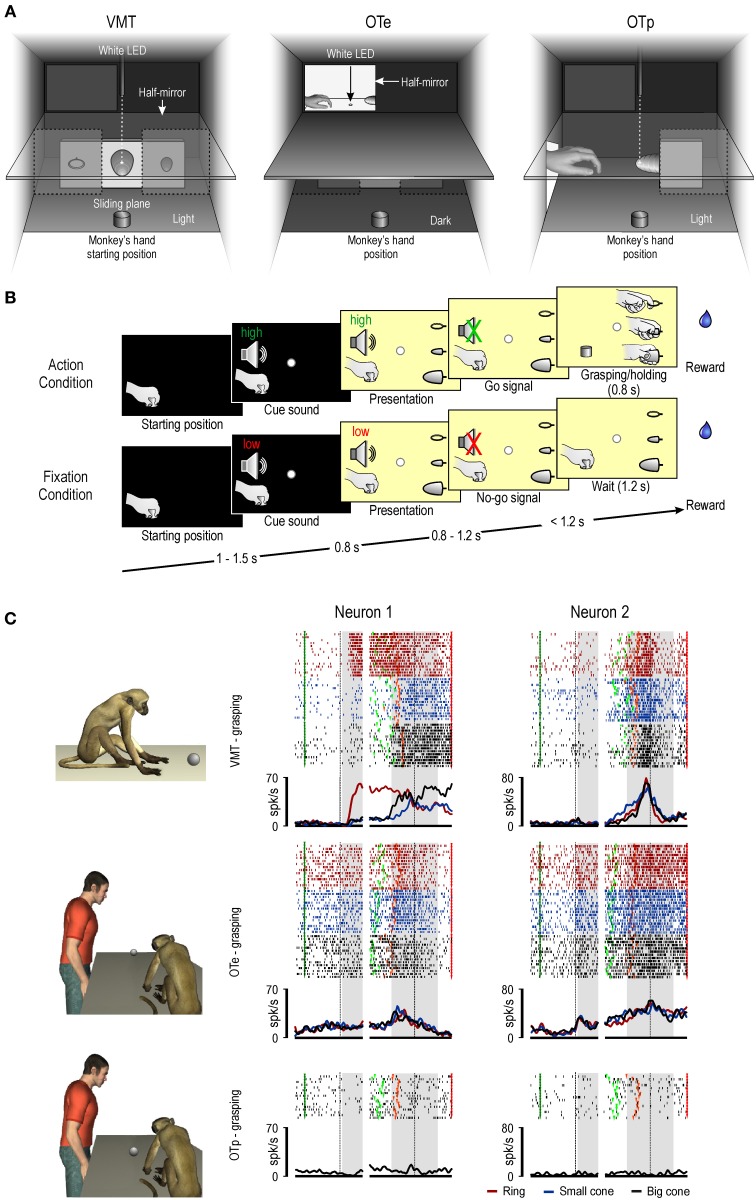Figure 1.
(A) Box and apparatus (seen from the monkey's point of view) settled for carrying out the visuomotor task (VMT), the observation task in the monkey's extrapersonal (OTe) and peripersonal (OTp) space. (B) Task phases of Action and Fixation conditions. Each trial started when the monkey had its hand in the starting position. A fixation point was presented and the monkey was required to fixate it for the entire duration of the trial. One of two cue sounds was then presented: a high tone, associated with the action trials, and a low tone, associated with fixation trials. After 0.8 s the lower sector of the box was illuminated and one of the three objects became visible. Then, after a variable time lag (0.8–1.2 s), the sound ceased (go/no-go signal) and the monkey either reached, grasped, and pulled the object (Action condition) or remained still for 1.2 s (Fixation condition) in order to receive the reward. The sequence of events and temporal constraints of the OTe and OTp were the same as in the monkey VMT, and the monkey had to simply maintain fixation in order to get the reward. (C) Examples of canonical-mirror neurons recorded in all the task contexts. On the left, a schematic view of the experimental paradigm. Each panel shows, from top to bottom, rastergrams and the spike density function. The gap in the rastergrams and histograms is used to indicate that the activity on its left side has been aligned on object presentation (first dashed black vertical line) while that on its right side is aligned on the pulling onset (second dashed black vertical line) of the same trial. The gray shaded areas indicate the time windows used for statistical analysis of neuronal response to object presentation (on the left) and grasping (on the right). Markers: dark green, cue sound onset; light green, cue sound offset (go signal); orange, detachment of the hand from the starting position (reaching onset); red, reward delivery at the end of the trial.

